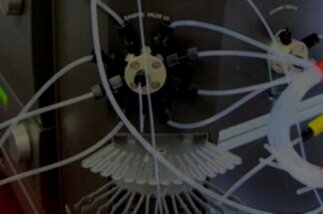
Service for Biacore™ T100 Surface Plasmon Resonance (SPR) System
You rely on your equipment. Your equipment should rely on ATG.
If there’s one thing you need out of your SPR Systems, it’s precision. A degree of precision the Biacore™ series is specifically designed to provide you with. At Analytical Technologies Group, we specialize in both the maintenance and repair of Biacore™ T100 systems. By servicing a narrow range of instruments and keeping replacement parts in stock, we are able to provide you with quick fixes and keeping your downtime minimal.
Your rely on your equipment. Your equipment should rely on ATG. Over 10,000 instruments have!
Tips for keeping your Biacore™ T100 in good working order:
Daily/after each run:
Empty the waste bottle
Weekly:
Inspect tube fittings and pumps
Check for leaks
Clean the flow system (Desorb)
Monthly:
Clean the instrument cover
Clean and disinfect the flow system (Desorb and Sanitize)
Inspect the needle and the liquid supply block
Inspect the sample compartment, look for signs of flooding
Run system check
Having technical problems with your Biacore™ T100?
Fast Response
We provide very prompt responses to customers within one business day.
Fast Turnaround
Our field service engineers are expediently dispatched across North America & Europe to fulfill your service request.
Expert Staff
ATG’s highly trained, highly skilled staff ensure your instruments remain in optimal condition.
Parts In Stock
To minimize instrument downtime, we stock virtually all parts for the systems in which we specialize.
Biacore™ T100 Troubleshooting Tips:
Always use fresh buffer and distilled water. If you prepare your own buffers, filter buffer and water through a 0.22 µm filter to remove particles.
If the system is used with particularly “sticky” molecules or complex mixtures such as serum, clean the flow system thoroughly after each run.
Do not take the sensor chip out of its protective cassette. Dust or other particles on the sensor chip surface can seriously interfere with detection.
If the PC does not seem to communicate with the instrument, check that the communication cable is properly connected.
Check the accessible tube fittings on the pumps, buffer selector valve and degasser regularly for leaks.
Make sure there is adequate ventilation around at the instrument site.
Check that there is sufficient buffer in the buffer bottle(s) and water in the water bottle at the start of a run.
Use only recommended vials and microplates (Appendix D). Always cap vials and cover microplates with foil, using the products supplied for this purpose by GE Healthcare.
If any errors cannot be resolved, your instrument likely requires service. We can help in a hurry! Contact ATG.

